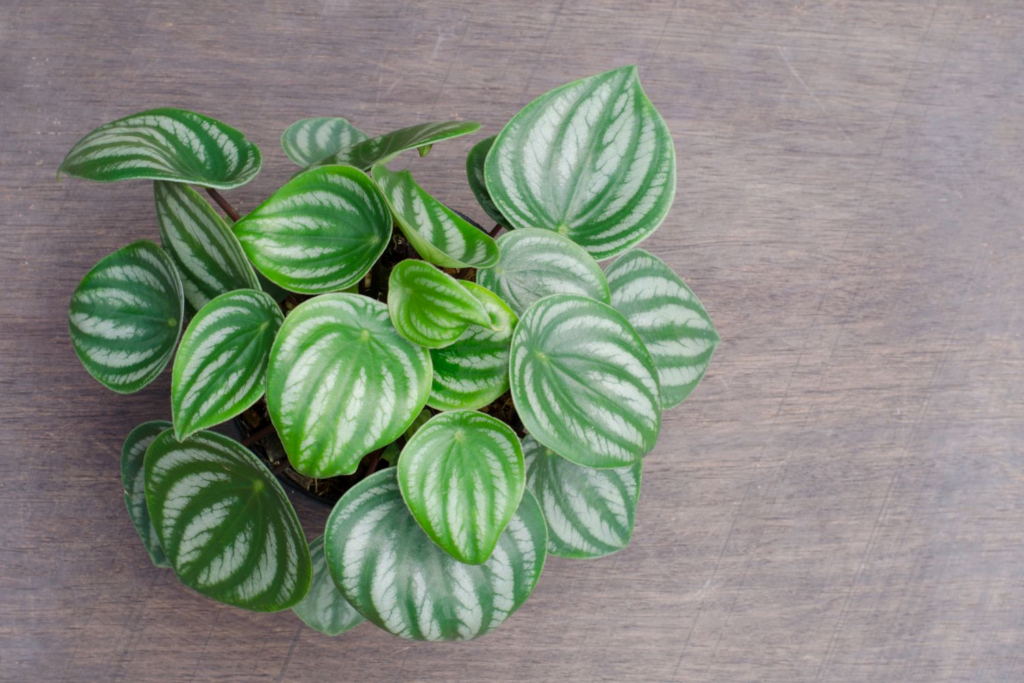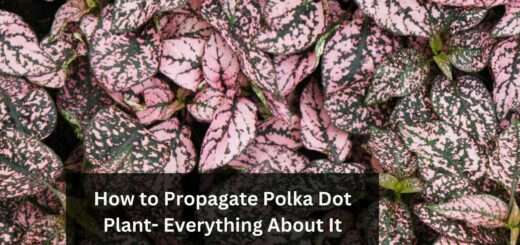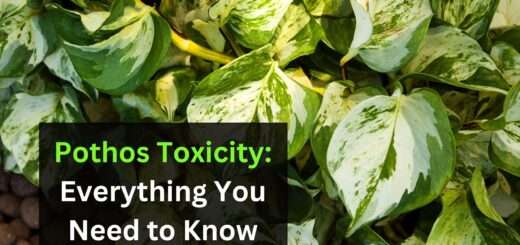How to Grow and Care for Peperomia Plant – Everything about them
It’s really sad and frustrating to see a plant looking dull and sad. Trust me, being a gardener, the plants are like your kids which you love to see blooming. That was the day I decided to revive my plant, so I went through some different research and implemented it. All they want is a perfect environment to grow and proper care.
Here, I have explained all my implemented step-by-step ways to grow peperomia plants, how to take care of them, ways to grow them using seeds, methods of pruning and propagating the plant, and common problems you need to take care of. If you are finding it difficult to grow peperomia plants, continue reading the article, and feel free to ask any queries in the comment section.
Quick takeaway:
- They grow with thick, fleshy leaves that store water in the plant.
- It is available in different varieties of shapes and sizes, some varieties have smaller leaves than a dime and some are as large as a baseball.
- The leaves of the plants are deep emerald green having markings and patterns in silver.
- The ripple peperomia plants are popular species having puckered and ruffled foliage.
- You can easily choose from variegated varieties of cream and white that appear in their leaves.
- It used to bloom with long, narrow stalks with green or brown color which don’t resemble flowers.
Peperomia Overview:
Talking about Peperomia plants are low maintenance, slow growing, and grow all year long. An interesting fact is that they are also known as clean-air plants. The Peperomia plant comes under a large genus of tropical plants belonging to the family of Piperaceae native to Mexico, South America, and the Caribbean. They are found in more than 1,500 known species having hearty plants with boast thick and fleshy leaves making them drought tolerance and vigor plants.
In my experience of growing them the leaves of plants can be textured or smooth in red, green, gray, or purple; variegated, marbled, or solid; large, heart-shaped, round, pointed, or tiny. The plants belonging to the Peperomia genus look so different from others that it’s difficult to differentiate even if they are related. Let’s understand more in detail with an example, the Peperomia obtusifolia plant varieties have a similar appearance to rubber plants so you can get confused with them.
| Genus name | Piperaceae |
| Common name | Peperomia Pants |
| Plant type | Houseplant |
| Light | Part Sun, Shade, Sun |
| Height | 2 to 36 inches |
| Width | 4 to 18 inches |
| Flower color | Green |
| Foliage color | Blue/Green |
| Special features | Good for Containers, Low Maintenance |
| Propagation | Division, Leaf Cuttings, Stem Cuttings |
| Uniqueness | Drought Tolerant |
Peperomia Plant Care:
The following are the main care requirements. If you want to grow peperomia, plants indoors:
- The peperomia plant grows best in medium to bright indirect light and avoids the plant from direct sunlight.
- For growing them, you may need to choose a potting mix that is loose and well-draining but helps to retain the moisture well.
- In a way to water the plant, you need to dry the soil lightly between watering to avoid the condition of over-watering.
- The plant prefers to grow in warm temperatures and medium to high humidity as they are not frost tolerant.
Light:
- You need to keep the peperomia plant in a place where they get medium to bright light, which will help maintain their vibrant foliage color.
- You can keep them directly in front of a West or east-facing window, which is a perfect space for keeping the plant, or keep them a few feet back from a South or north-facing window.
- If you don’t provide sufficient light, the leaves of the plant will start drooping and drab coloration.
- The plant getting the direct sun rays should be avoided because it will burn the leaves of the plant.

Soil:
- They are used to grow as epiphytes which means in the wild they settle into the nook of a tree and get to the roots.
- The key factor for growing the plants is to grow them in a soil blended with chunky, loose, and acidic.
- Using orchid potting medium is quite suitable but peperomia plants can be grown in regular potting soil.
- Use a handful of coco coir and perlite which will lighten the soil for good aeration.

Water:
- In order to water the plant, you need to dry the top 2 inches of the soil between watering.
- Growing a peperomia plant on dry soil is much better than saturating the plant.
- If the plant gets soggy soil it will lead to root rot.
- They consist of succulent-like leaves meaning the plant doesn’t need frequent watering.

Temperature and Humidity:
- Peperomia plants grow best in USDA zone 10 which makes them not able to handle freezing temperatures.
- Being a tropical plant, the peperomia plant prefers to grow in a warm and steamy environment mainly during summer months when they are mostly active.
- In case, you are not letting the plant face the outdoor environment then it’s better to place the plant on a tray of pebbles that will help to increase water ambient humidity.
- If you don’t want to use a Pebble tray then place the plant in a humid room. For example, a bathroom or kitchen which is the perfect place for humidity-loving plants.
- Move the plants indoors to protect them from night temperature which drops to 50 degrees Fahrenheit.

Fertilizer:
- Talking about applying fertilizer, peperomia plants is able to grow without supplement fertilizer throughout their entire life.
- In case, the soil is poor you can use diluted liquid fertilizer once a month or two in the growing season.
- Make sure not to add Fertilizer in the winter season.

Types of Peperomia:
Peperomia plants consist of different varieties which make exceptional houseplants. Here are some of the most popular varieties of peperomia plants:
- P. obtusifolia (Baby Rubber Plant): It is a peperomia plant variety with thick dark green vaccine leaves that look like a rubber plant.
- P. verticillata ‘Belly Button’: It is considered an eye-catching variety having a compact form and tiny leaves that look like a baby tear plant.
- P. metallica var. Colombiana: It is a variety having tricolor with a college of Brown silver and red color.
- P. nitida (cupid Peperomia): They are back to grow on hanging baskets having heart-shaped leaves edged in cream.
- P. perciliata: It is the peperomia plants that have tight growth habits and grows in shape foliage and red stem
- P. caperata ‘Suzanne’: They are a unique plant because of having deep wrist foliage and silver accent
- P. argyreia (Watermelon Peperomia): It is a peperomia plants varieties that grow in round leaves having been stripped with dark green and light green which look like a small watermelon.
- P. tetraphylla (Peperomia Hope): They are the trailing varieties having small round Green Leaves that are thick and succulent due to which they dont require frequent watering.
- P. rotundifolia (Trailing Jade Plant): It is used to grow with small thin Green Leaves.
- P. pellucida: Consists of vaccine heart-shaped Green Leaves which are deep veining.
- P. albovittata: They are the peperomia varieties That used to grow with light Green Leaves having dark green veining and red stems.
- P. nivalis (Taco Leaf Peperomia): It is a low-lying plant with pointed leaves that look similar to taco shells.
- P. graveolens: They consist of thin cubed leaves with green on top and red on the bottom.
Pruning:
Always prune peperomia plants during early spring to correct leggy sparse growth. During pruning, you need to pinch the stem above a leaf node which will help to encourage the plant’s lush appearance with more branching.
Make sure to remove the end of each stem and the first blooming leaves in the process for which use your fingers or snip it off with the help of pruners.
Propagating Peperomia Plants:
You can propagate Peperomia plants anytime during the spring or summer season because they are more active in this period. The following are some steps you need to follow to propagate the plant using the stem cutting:
- Have sterile pruning snips or scissors, a small pot, potting soil or orchid mix, plastic wrap, and a brightly lit location.
- For stem cutting, cut off a leaf having at least an inch of the stem of the parent plant.
- Now fill the container using the potting soil to keep the cutting into it.
- After placing the cutting keep the pot in a bright location where it gets a lot of indirect light.
- At Last, cover the pot with plastic wrap that will create a Mini greenhouse environment and will able to retain moisture.
- Remember to water the plant consistently and never dry the soil unless the root forms.
- Growing of the roots will be a scene within a few weeks after which you can transplant the cutting into a larger container.
Growing Peperomia plants From Seed:
If you want to grow Peperomia plants using the seeds you need to have a soilless seed starting mix, sufficient water, and a warm, bright sunny spot which will contribute to the germination of the seed. Here are some basic steps you need to follow:
- Keep the soil consistently moist until you observe the germination process.
- When you observe the seed germinating you can transplant the Seedling into a container and keep it in a place where it gets bright with indirect sunlight.
- You can propagate the plant by cutting the stem which will be identical to the parent plant

Potting and Repotting Peperomia Plants:
The Peperomia plants can live for years growing in small containers because they enjoy the root-bound existence making them grow slowly. You can leave the leaves alone unless any roots come out of the drainage hole and if you find them repot the plant into the new container which should be a couple of inches bigger than the past container. For planting peperomia in a new container use an acid potting mix or orchid bark.
Peperomia Blooms:
The plant rarely blooms flower having an unscented bloom with spikes of brown and greenish-white. The flowers don’t look like flowers as it resembles like they are offshoots. After flower blooming cut it from the base of the shoot or leaves to fall them off.
Common Problems With Peperomia:
The Peperomia plant is a low-maintenance plant that doesn’t require frequent watering and is always placed in a bright indirect light where they don’t get direct sun. With all of these, check the soil condition every once in a while. While growing the plant if you notice the following signs that indicate that your plant is dealing with some problem such as:
Leaves Curling or Yellowing:
In case of the plant leaves start to curl or turn yellow it is because of providing the plant with too much water. You need to remove the yellow leaves from the plant as soon as you observe them.
Deformed Leaves:
You need to pull off the deformed leaves after which the plant will grow back healthy if it does not it means the disease is spreading and affecting the plant’s health.
Leaves Falling Off:
The leaves begin to fall off because of lack of water light or overwatering so, make sure the plant gets plenty of indirect light and dry the soil slightly between watering schedules with watering the plant thoroughly. You need to provide the plant with proper drainage so that there is no problem of water logging that result in root rot.

Conclusion:
After reading this article, I am sure you will find it easy to grow peperomia plants by giving them proper requirements such as light, soil, water, temperature and humidity, types of peperomia plant, pruning, propagating peperomia plant, and common problems you need to take care for.
Frequently Asked Questions
What is the life of peperomia plants?
Many peperomia plants live for 5 to 10 years after getting the right conditions to grow. Peperomia plants are available in more than 10000 species and only a few of them are available as house plants so it is much difficult to say how long they live.
What is the Easiest growing peperomia plant?
Most of the plants are easy to grow but the easiest is the blunt-leaved radiator plant or baby rubber tree due to which they are super demanding


